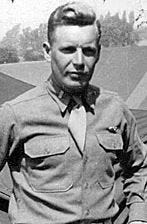Jocko Thompson: A Different Kind of Hero
World War II had a huge impact on many professional baseball players. Here is the story of one.
This story originally appeared in “Here’s the Pitch,” the newsletter of the Internet Baseball Writers Association of America,
The year 2025 marks the 75th anniversary of the 1950 Philadelphia Phillies “Whiz Kids” National League pennant winning team. The young team was full of rising stars like Robin Roberts, Richie Ashburn, Del Ennis, Granny Hamner, Willie “Puddin’ Head” Jones and others. Many sportswriters were predicting the Phillies would be serious pennant contenders for the first time in decades, especially if they could get some more pitching. Manager Eddie Sawyer was hoping that a not-so-young, 33-year-old lefthanded pitcher, with a Warren Spahn-like leg kick, named John “Jocko” Thompson might help.
Thompson, like many of his contemporaries, had his professional baseball career interrupted by World War II, losing four prime years while in the service. And while Thompson never became a big-time hero on the baseball field, from 1942-45 he established himself as a significant war hero. As Hall of Fame Phillies pitcher, Robin Roberts put it in his book about the Whiz Kids, “We understood that Jocko carried around a considerable amount of shrapnel in his body.”
A native of Massachusetts, Jocko played college ball for Northeastern University in Boston, before being signed by the Boston Red Sox. After two solid years (1940-41) in the Red Sox minor league system, Thompson volunteered for military service immediately after the Japanese attack on Pearl Harbor. He became a paratrooper and officer in the 82nd Airborne Division and led a series of parachute combat missions during raids on Anzio, Sicily, and Salerno in Italy. As the Allies continued the march toward Germany, he led paratrooper raids in Nazi occupied Holland.
On September 17, 1944, Lieutenant Thompson and his 16-man platoon were dropped into Grave, Netherlands, as part of Operation Market Garden. Their mission was to take a key bridge over the Maas River near Grave. Dropped only 600 feet from the target, and within earshot of German gunfire, Thompson was unsure whether to attack with his small platoon or wait for reinforcements. “Since [the bridge] was our primary mission”, he later said, “I decided to attack.” The outmanned platoon managed to take out heavily armed German machine gun installments and seize the bridge. They then held the bridge against a German counterattack until reinforcements arrived. For his efforts that day, Thompson received a field promotion to captain and later served as an aide to General James M. Gavin.
After the war, Jocko returned to the Red Sox minor league organization at Toronto. The Phillies acquired him when they took over the Toronto franchise. At 31 years of age, Thompson made his major league debut for the Phillies on September 21, 1948. He pitched a five-hitter, beating the Cincinnati Reds 6-1 at Shibe Park in Philadelphia. He was up and down between the Phillies and Toronto in 1949, appearing in just eight games with the big club, but he was 14-5, 2.73 at Toronto, giving the Phillies hope he might help them in 1950.
Alas, a mediocre spring led to him being sent back to Toronto on May 2 after pitching just one inning of relief for the Phillies. Thompson struggled in Toronto as well, where he went 10-14 with a 4.57 ERA. Recalled by the Phillies at the end of the season when star lefty Curt Simmons was called up to active military duty, Thompson made just one appearance and did not make the post-season roster. The knock on Thompson was his lack of major league level control. He averaged almost four walks per nine innings throughout his major and minor league career.
With Simmons still in the service during the 1951 season, however, Thompson became the new Phillies lefthanded starter. He was not awful, although control issues continued to plague him. He walked 17 batters in his first four starts. On June 1, he walked seven St. Louis Cardinals, but still managed to win the game, 7-3, with an inning of relief help from Jim Konstanty. On July 17, Thompson pitched the finest game of his major league career, a 10-0 whitewashing of the Cincinnati Reds. He allowed six hits, struck out nine, and, most surprisingly, perhaps, walked none.
The Whiz Kids of 1950, however, were the “Fizz Kids” of 1951, when they fell to fifth place in the National League with a 73-81 record. Thompson finished the year with a 4-8 record and 3.85 ERA. It would be his final year in the major leagues. Jocko pitched for four more years in Triple-A, first at Baltimore and then Richmond, before finally hanging up his spikes in 1956 at age 38. After baseball, Thompson returned to the Boston area and went into the wholesale grocery business. He later moved to the Washington, DC area.
While Jocko Thompson didn’t win any medals on the major league baseball field, his military record showed him receiving the Silver Star, the Bronze Star, and two Purple Hearts. He also received decorations for his valor from the French, Dutch, and Belgian governments.
On September 17, 2004, sixty years after the battle at the bridge in Grave, and sixteen years after Thompson’s death, the people of Grave held a ceremony renaming that bridge the John S. Thompson Bridge. Jocko’s widow and many veterans of the war were in attendance. Jocko Thompson’s legacy as a war hero was assured for the ages.
References:
Gary Bedingfield’s Baseball in Wartime. Baseball in Wartime - Jocko Thompson Retrieved February 15, 2025.
Jocko Thompson Stats, Height, Weight, Position, Rookie Status & More | Baseball-Reference.com Retrieved on February 15, 2025
Roberts, R. and C. P. Rogers, The Whiz Kids and the 1950 Pennant. Philadelphia: Temple University Press, 1996.
Trutor, Clayton. Jocko Thompson. Society for American Baseball Research. Jocko Thompson – Society for American Baseball Research , retrieved on February 15, 2025.


